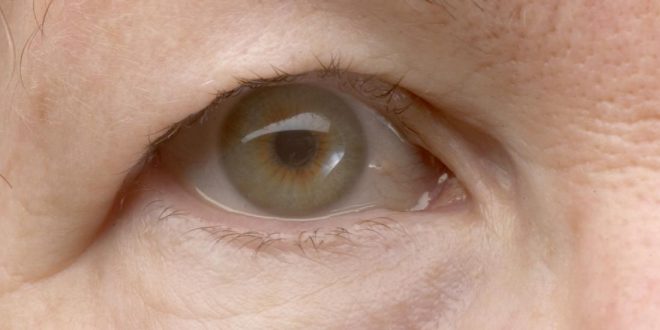As we grow older, we lose elasticity, and our skin starts to erode and wrinkle. Usually, facial sagging occurs around the eyes. The condition is known as Droopy Eyelids. So you’ve got “droopy eyelids.” Maybe you’re having trouble seeing because your eyelids are covering your eyesight. Perhaps you’re continually raising your eyelids with your fingers or your brows. Friends and family members may have commented on the look of your eyelids. To learn about your Droopy Eyelids treatment options, see an best eye doctor in Mumbai. The doctor may suggest eye exercises, injections, or even surgery to revitalize eyelids.
What are droopy eyelids?
Eyelid drooping is the sagging of the upper eyelid. If the edge of the upper eyelid is lower than it should be, then this condition is ptosis. Ptosis condition is unilateral ptosis when it affects one eye and bilateral ptosis when it affects both eyes. If there is excessive baggy skin in the upper eyelid, it is dermatochalasis. Eye drooping can be due to either or both of these conditions.
Depending on the severity of the condition, droopy eyelids can block or reduce vision depending on how much it covers the pupil. In most cases, the conditions can be resolvable or sometimes require medical interventions. For different treatment options, you can consult an eye specialist in Mumbai.
Causes of ptosis?
The major causes of drooping eyelids are a weakness of the muscle that raises the eyelid, damage to the nerves that control that muscle, or looseness of the skin of the upper eyelids. This is not a serious life-threatening disorder but can cause mild discomfort. It can be due to the normal aging processes or could be present before birth.
Ptosis can also result from an injury or disease. Some conditions that can cause eyelid drooping are – tumors around the eye, diabetes, myasthenia gravis, stroke, style, or swelling of eyelids.
Symptoms of droopy eyelids?
Sagging is the main symptom of drooping eyelids. In some cases, vision is completely blocked. However, in certain cases, it is not noticeable. Other symptoms can be:
- Dry or watery eye
- Your face might also look weary and tired
If there is persistent eye drooping, consult your doctor.
How are droopy eyelids diagnosed?
A doctor performs a physical examination based on the symptoms provided by the patient. Once the condition of drooping eyelids or ptosis is determined, then examined by the doctor. The doctor then runs a few tests, like a slit lamp exam, to get a closer look at your eye in a high-intensity lamp or a tension test.
What are the treatment options for droopy eyelids?
The treatment of the condition is dependent on the causes and severity of the condition. If you were born with this condition or it starts at old age, then there is nothing to worry about as the condition is not harmful. You can opt for surgery if you want to reduce drooping.
Suppose the doctor finds an underlying condition causing ptosis. Then this condition can be easily treated by treating the underlying condition. This typically solves the problem. If your vision is unclear, you will need medical assistance or surgery. Another physical treatment that can help with the condition is ptosis crutches.
Surgery –
In case the doctor confirms the surgery, then during the procedure, the levator muscles become tight to hold the eyelids in place. These muscles are responsible for the drooping in your eyes. This surgery will lift the eyelid into the desired position.
It is a simple procedure, but there are risks associated with this surgery, like dry eye, scratched cornea, or hematoma. A hematoma is a collection of blood in the spot of the procedure. It Is uncommon for surgeons to place the eyelids too high or low, but this can also be a risk when opting for surgery.
Another alternative for surgery is a sling operation in which the forehead muscles hold the eyelids in place.
Ptosis Crutches –
The nonsurgical option for drooping eyes is ptosis crutches. It involves adding an attachment to the frames of your glasses. It prevents drooping by holding the eyelids in place.
Ptosis crutches are of two types. Adjustable and reinforced. The adjustable crutches are attached to only one side of the frame of the lenses, and reinforced crutches are attached to both sides of the crutch.
Crutches are flexible to use and can be attached to any glass. An ophthalmologist can work with people with ptosis to help them select the best crutches per the patient’s needs.
How to prevent ptosis?
There is no way of preventing droopy eyelids. Though knowing the symptoms and the disorder and getting a regular eye checkup can help you determine the best treatment. Since this condition can block your vision, it is better to take it seriously. You can prevent it from getting worse by quickly getting a checkup from the doctor.
FAQs–
How long does it take to heal drooping eyelids?
It takes about 1-2 weeks or longer to heal drooping eyelids.
What are the simple treatments to heal drooping eyelids without surgery?
There are different ways of treating drooping eyelids without surgery: getting injections or Botox (botulinum toxins), fillers, chamomile tea bags, eyelid fat removal, or fat repositioning.
How long does an eyelid surgery last?
Eye surgeries are usually long-lasting. The longevity can differ slightly between patients. One can expect the results to last 5-7 years for upper eyelids, whereas lower eyelid surgeries are essentially permanent.
What are the precautions after eyelid surgery?
It will be better to stay healthy after eyelid surgery. Try to avoid getting a cold, cough, or stomach infection. These health conditions can increase blood pressure at the surgical site, and you should also avoid lifting heavy weights 4-6 weeks after the surgery.
Conclusion –
Droopy eyelids are not usually harmful to your health. However, if the condition blocks your vision, you should be careful while doing your daily chores. The treatment of the condition is dependent on the causes of the same. It is a cosmetic issue that can be dealt with without a surgical procedure. But if the underlying issue of drooping is a more dangerous condition like diabetes or stroke, the patient should consult an eye specialist in Mumbai.
 Posting Point
Posting Point

